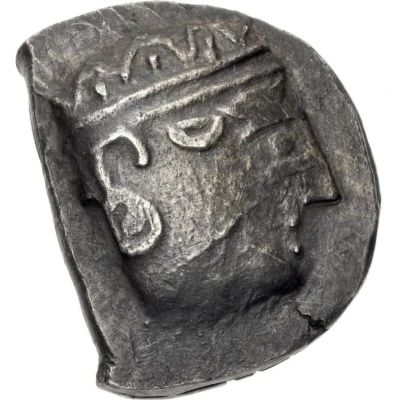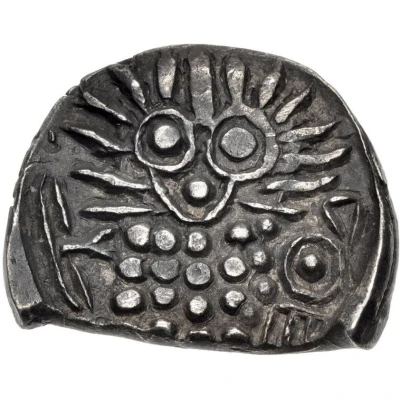


Tetradrachm 250 BC - 150 BC
| Silver | 15.14 g | 27 mm |
| Issuer | Minaean Kingdom (Southern Arabia) |
|---|---|
| Type | Standard circulation coin |
| Years | 250 BC - 150 BC |
| Value | Tetradrachm (4) |
| Currency | Drachm (ca. 300 – 25 BC) |
| Composition | Silver |
| Weight | 15.14 g |
| Diameter | 27 mm |
| Shape | Round (irregular) |
| Technique | Hammered |
| Orientation | Variable alignment ↺ |
| Demonetized | Yes |
| Updated | 2024-10-09 |
| Numista | N#432594 |
|---|---|
| Rarity index | 100% |
Reverse
Owl standing right, wings folded; stylized olive spray and crescent to left, ƎΘΔ downward to right.
Script: Greek
Lettering: ƎΘΔ
Comment
M. Huth, “The ‘folded flan’ coinage of eastern Arabia: some preliminary comments” in Arabian Archaeology and Epigraphy 9 (1998), 5; M. Huth, “Monetary Circulation in South West Arabia” in CCK, p. 85, I.
Comment from CNG : “This fascinating coin of derivative Athenian type was struck on a folded flan of another coin, and was originally attributed by Huth (1998) to a mint in eastern Arabia, where all of the six then-extant examples had been found. The discovery of the al-Jawf hoard in 2002, however, definitively changed his view of this intriguing coinage. In his analysis of the hoard (in CCK), Huth determined that all of the previous six coins, and those found in the hoard, were struck from the same mint, in three phases that employed increasingly simplified methods. In the first phase, the coins were struck on previous tetradrachms that were folded over twice, forming a triangular shaped flan upon which derivative Athenian types were struck. The second phase consisted of coins struck on previous coins that had only been folded over once, forming a semicircular shaped flan (the present coin is the only known example from this phase). Finally, in the third phase, the host tetradrachms were cut into two halves that were then each folded once, then both halves were placed upon each other and joined by hammering, resulting in a triangular shape. The identification of the undertype used for this series in uncertain. While Huth originally surmised that Alexanders were the common host coin, his analysis of the al-Jawf hoard suggested that this was not likely. Though the question of the undertype remains unresolved, the hoard provided strong evidence that this series was not of eastern Arabian origin, but rather from a mint in the region of Wadi al-Jawf, in the Minaian trading sphere.”
Interesting fact
One interesting fact about the Minaean Kingdom's Tetradrachm coin is that it features a unique blend of ancient Greek and Arabian design elements. The coin's obverse side bears the image of a bearded king, wearing a crown and a cloak, while the reverse side features a standing figure of the Greek goddess Athena, holding a spear and a shield. This fusion of cultural influences reflects the rich cultural exchange that occurred in the region during the Hellenistic period.